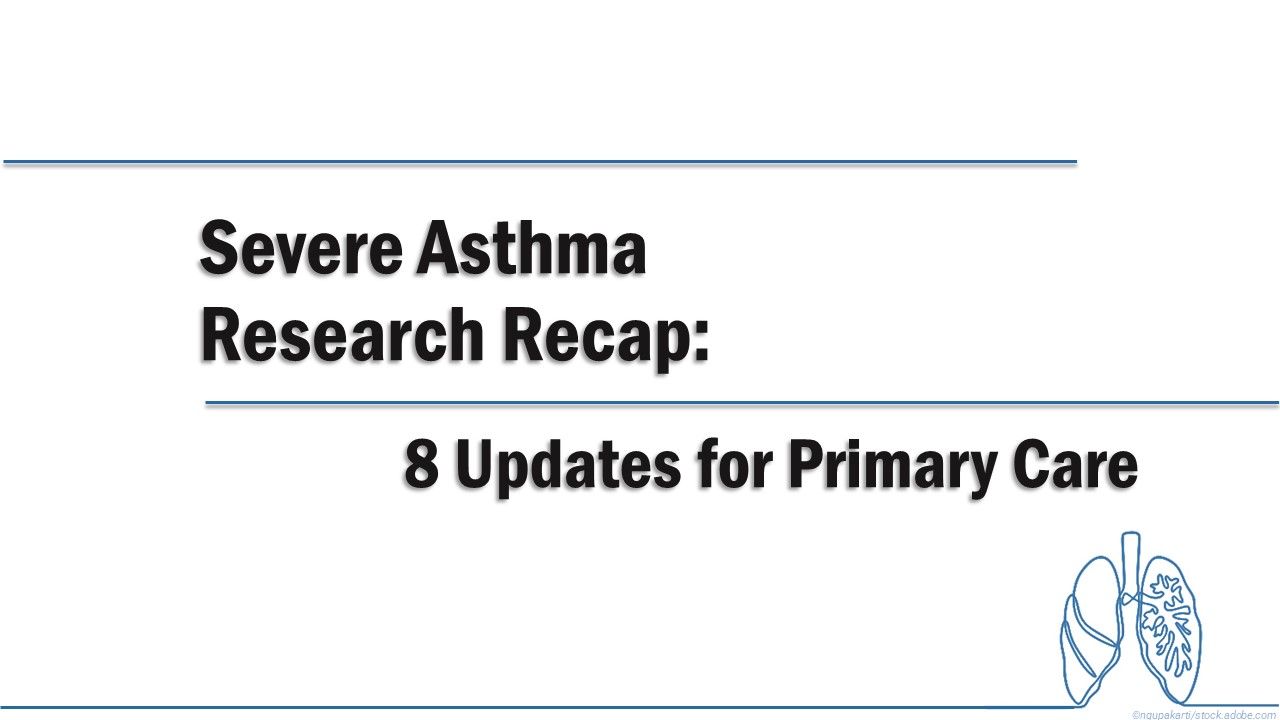© 2025 MJH Life Sciences™ , Patient Care Online – Primary Care News and Clinical Resources. All rights reserved.
Severe Asthma Research Recap: 8 Updates for Primary Care
Research summaries on GINA revisions, a steroid-reduction algorithm, factors that predict asthma exacerbation risk, and more.
Global Initiative for Asthma (GINA) treatment divided into tracks, greater precision in exacerbation risk prediction, an individualized algorithm to reduce steroids, and reasons why patients don't adhere to treatment—these are some of the more significant recent developments in severe asthma research.
Scroll through the slides below for concise summaries of the latest findings.
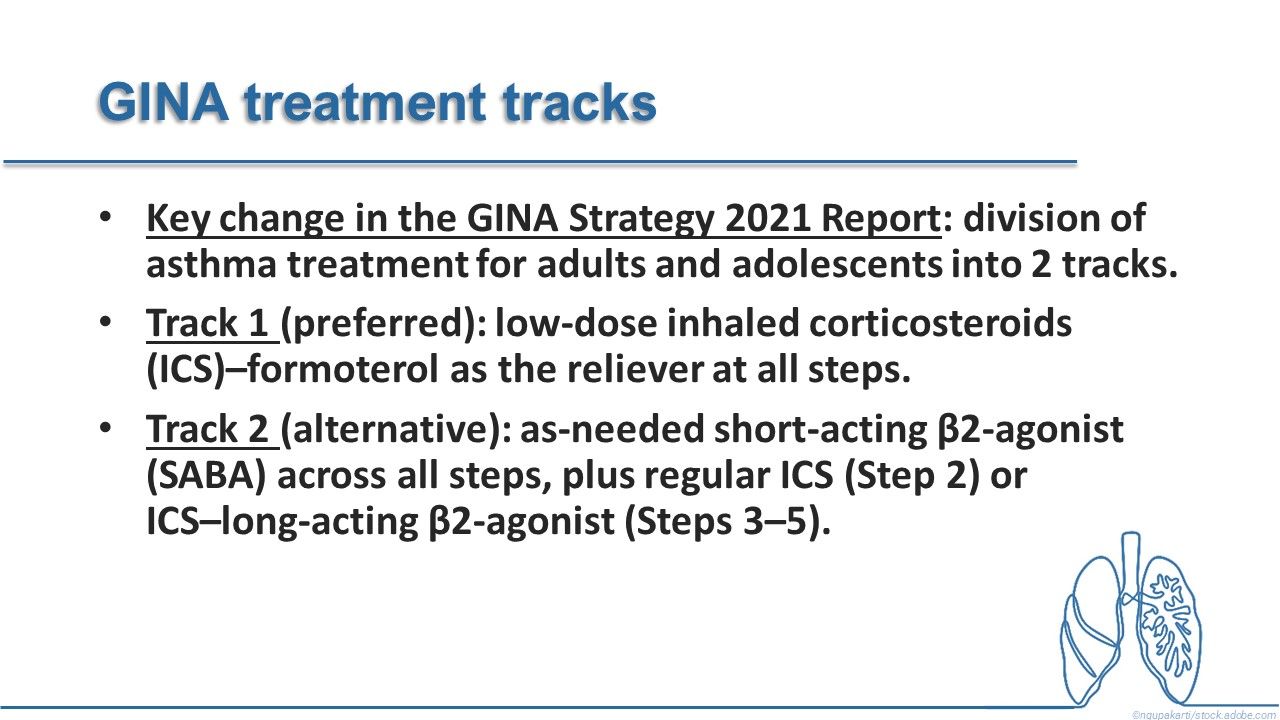
GINA treatment tracks. Division of asthma treatment for adults and adolescents into 2 tracks is a key change in the GINA Strategy 2021 Report. Track 1 (preferred) has low-dose inhaled corticosteroids (ICS)–formoterol as the reliever at all steps. Track 2 (alternative) has as-needed short-acting β2-agonist (SABA) across all steps, plus regular ICS (Step 2) or ICS–long-acting β2-agonist (Steps 3–5). American Journal of Respiratory and Critical Care Medicine.
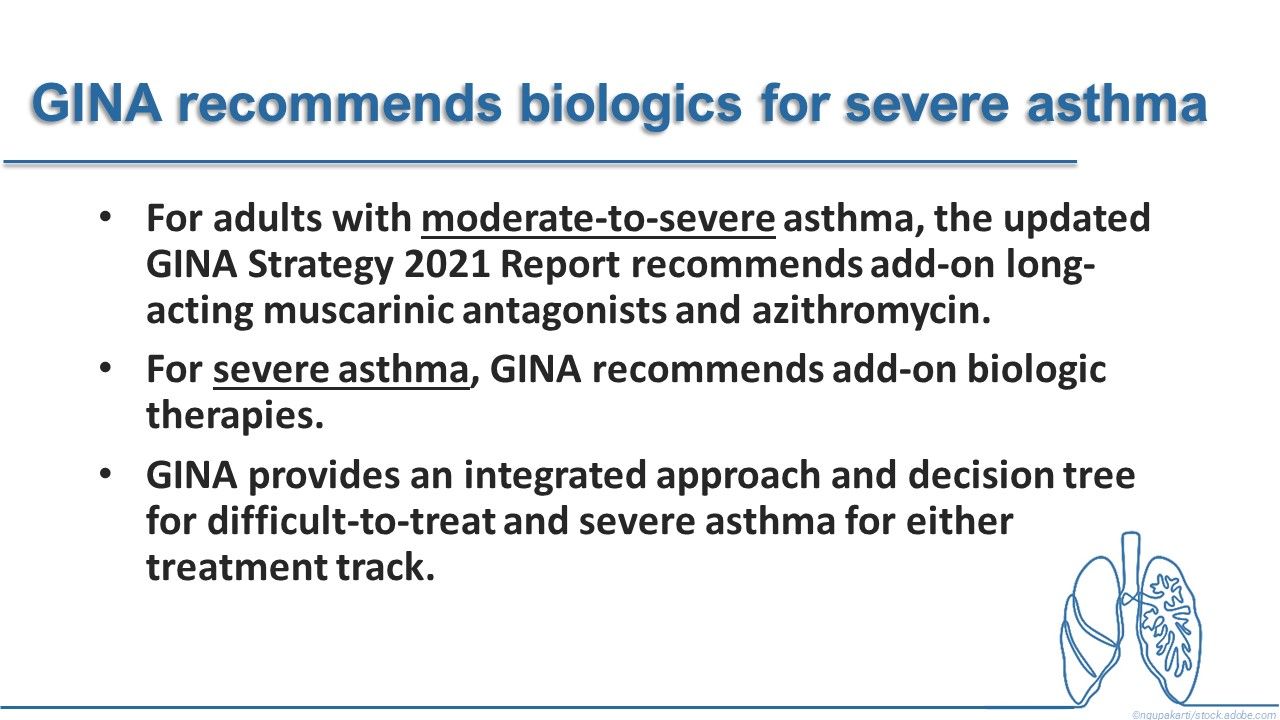
GINA recommends biologics for severe asthma. The updated GINA Strategy 2021 Report recommends add-on long-acting muscarinic antagonists and azithromycin for adults with moderate-to-severe asthma. Add-on biologic therapies are recommended for severe asthma. GINA provides an integrated approach and decision tree for difficult-to-treat and severe asthma for either treatment track. American Journal of Respiratory and Critical Care Medicine.
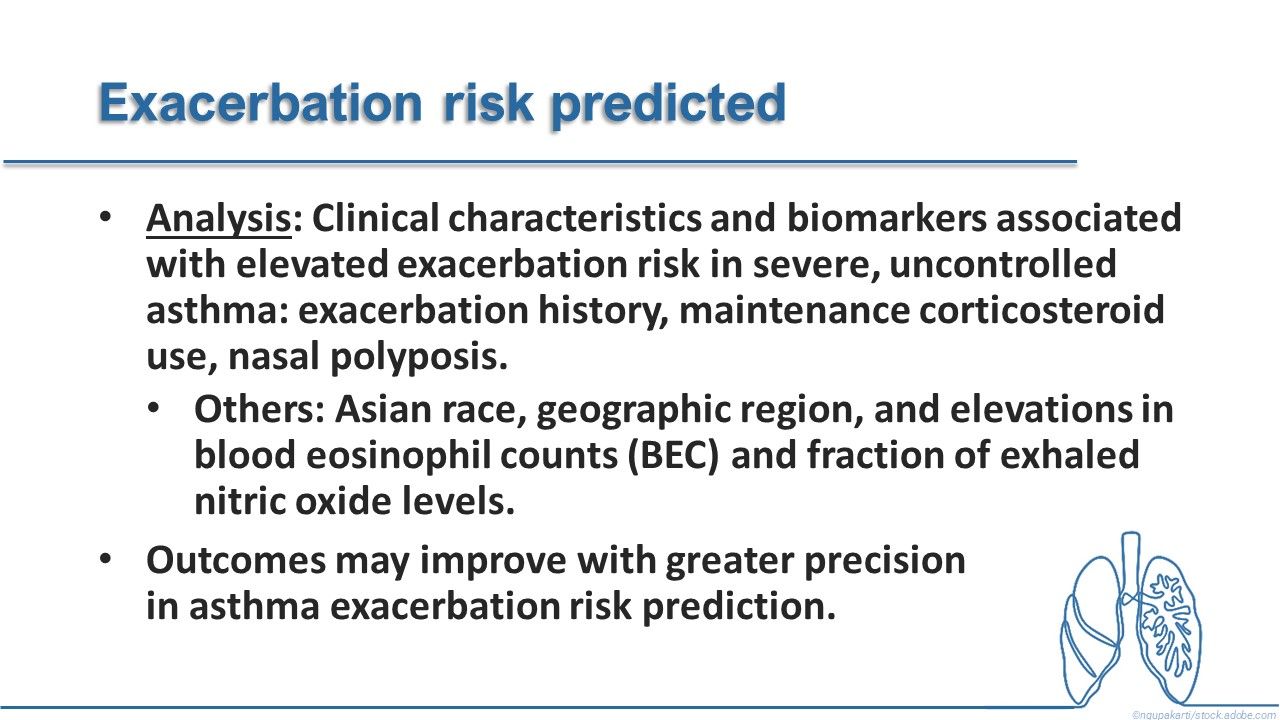
Exacerbation risk predicted. Clinical characteristics and biomarkers associated with elevated exacerbation risk in severe, uncontrolled asthma were identified as exacerbation history, maintenance corticosteroid use, nasal polyposis, Asian race, geographic region, and elevations in blood eosinophil counts (BEC) and fraction of exhaled nitric oxide levels. Outcomes may improve with greater precision in asthma exacerbation risk prediction. European Respiratory Journal.

Steroid-reduction algorithm. In the PONENTE trial, most patients with severe eosinophilic asthma achieved elimination or maximal reduction of oral corticosteroids using a rapid, individualized steroid-reduction algorithm, including adrenal insufficiency monitoring, after benralizumab initiation. Dosage reductions were achieved irrespective of baseline eosinophil count, baseline oral corticosteroid dosage, and oral corticosteroid treatment duration. The Lancet Respiratory Medicine.
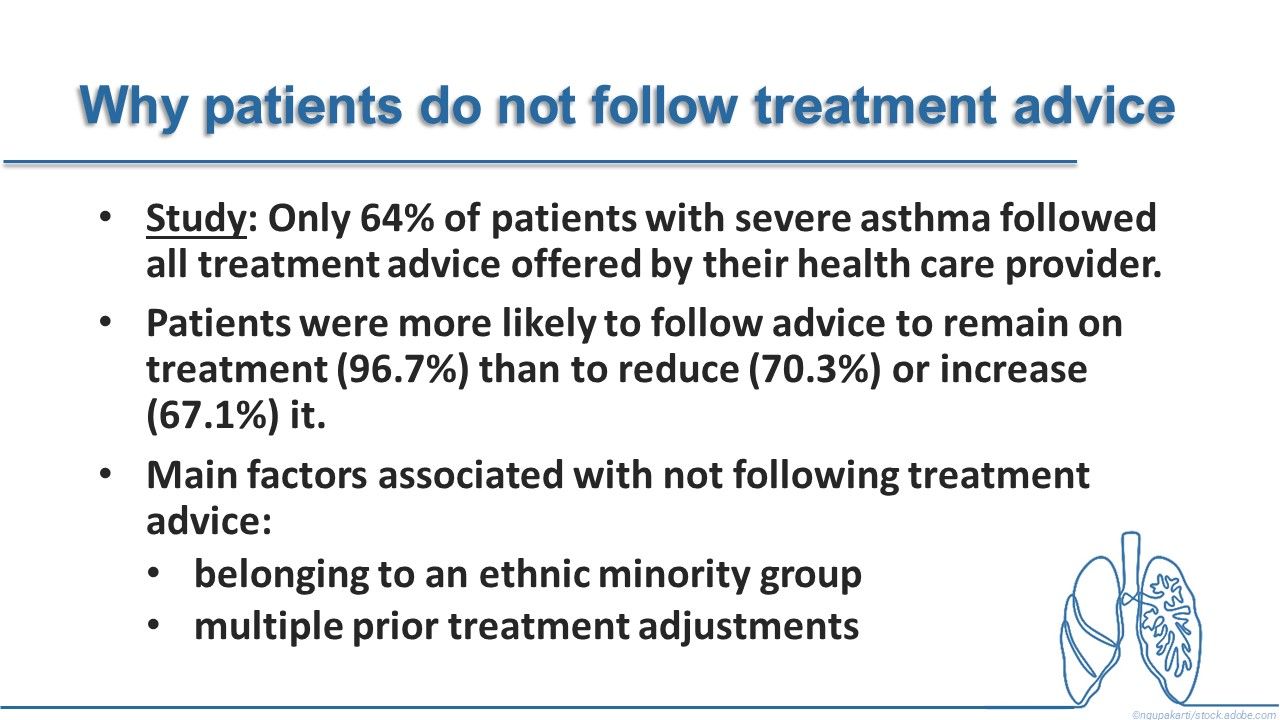
Why patients do not follow treatment advice. Only 64% of patients with severe asthma followed all treatment advice offered by their health care provider in a recent study. Patients were more likely to follow advice to remain on treatment (96.7%) than to reduce (70.3%) or increase (67.1%) it. Belonging to an ethnic minority group and multiple prior treatment adjustments were the main factors associated with not following treatment advice. European Respiratory Journal.

Patients underestimate disease severity. Asthma severity was underestimated by 95% of patients with severe asthma in a survey in Spain; 52% judged their asthma as mild, and only 2% considered it severe. The authors suggested that because assessment of asthma severity determines the medications needed to achieve disease control, patients who have a misperception of asthma severity might not achieve optimal control. The Clinical Respiratory Journal

Factors that accelerate time to COPD. Significant risk factors found to accelerate time to chronic obstructive pulmonary disease (COPD) incidence in patients with asthma included male sex, older age, history of tobacco use, increased length of hospital stay, asthma exacerbation, increased comorbidity burden, and SABA overuse. The incidence of COPD among patients with mild, moderate, and severe asthma was 0.85, 2.82, and 6.13 per 1000 person-years, respectively. Journal of Chronic Obstructive Pulmonary Disease.

Severe asthma linked with severe COVID-19. More severe asthma was associated with more severe COVID-19 outcomes in a recent study. Significantly associated with hospitalization were asthma with regular ICS use, intermittent ICS plus add-on asthma medication use, regular ICS plus add-on use, and frequent exacerbations. The risk of COVID-19 hospitalization appeared to be similar to that with influenza or pneumonia. Atopy and BEC were not associated with severe COVID-19 outcomes. American Journal of Respiratory and Critical Care Medicine.
Related Content:

